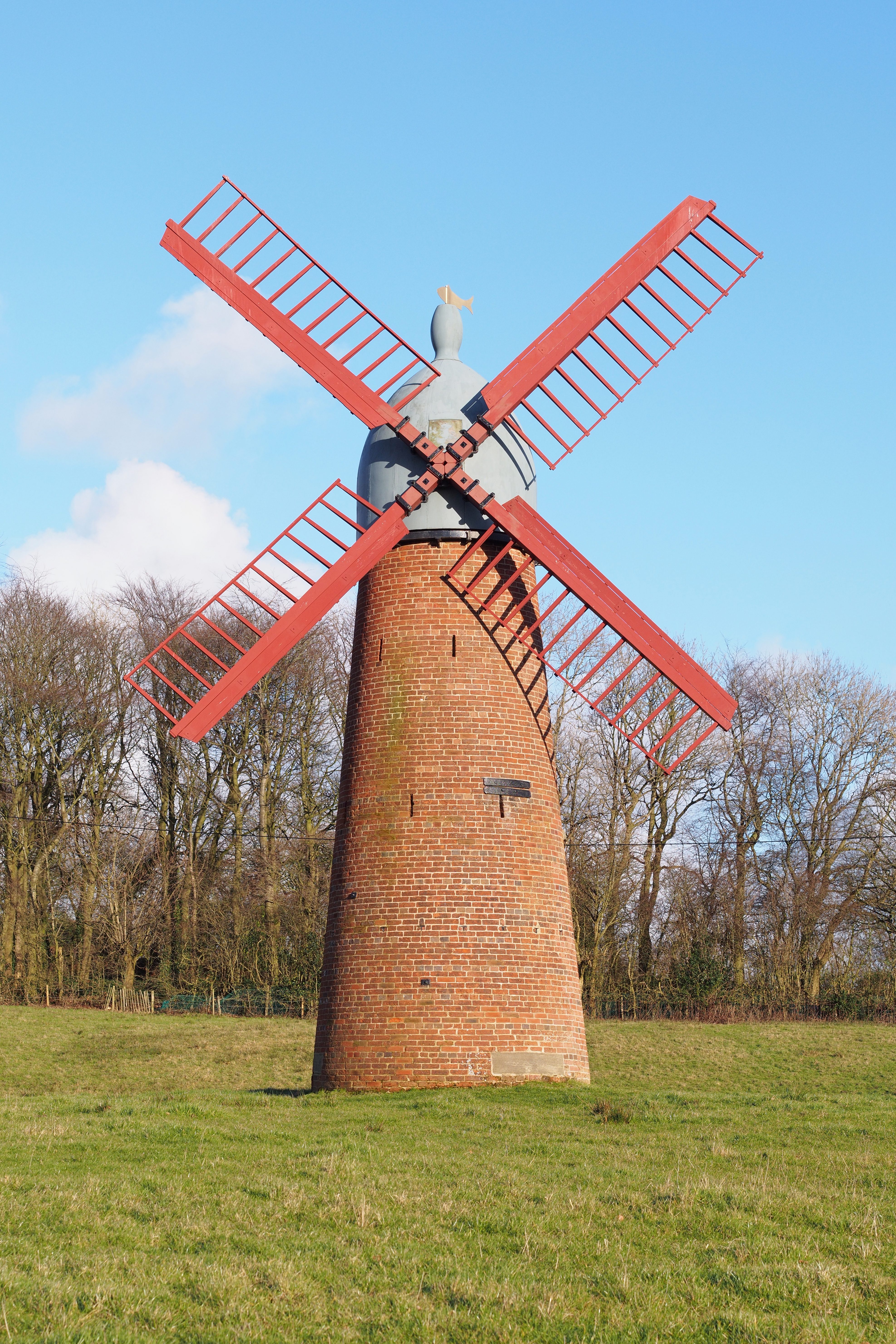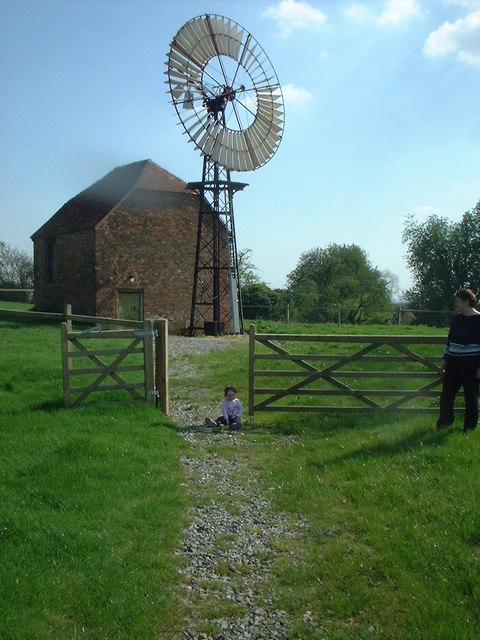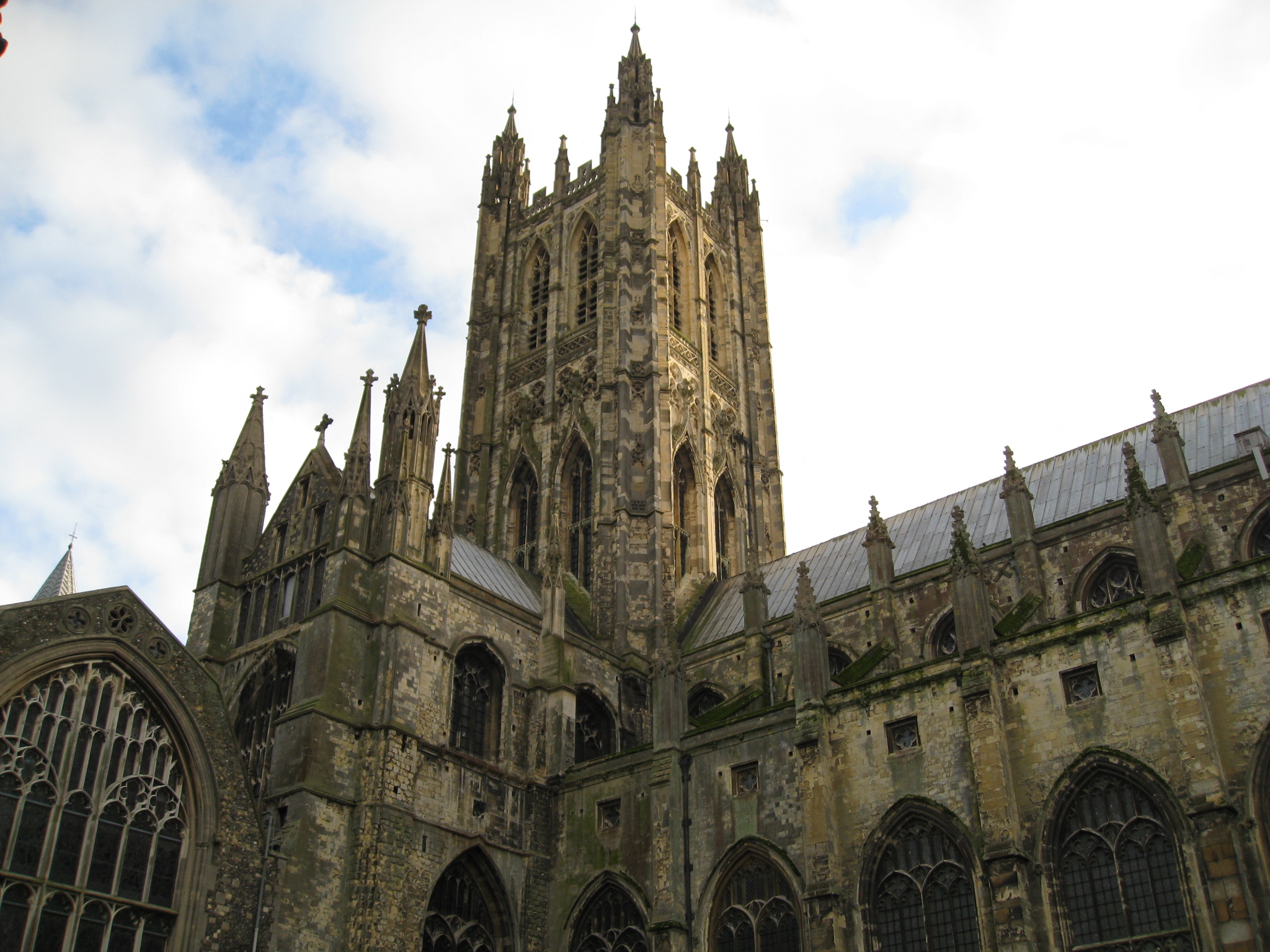|
St Martin's Mill, Canterbury
St Martin's Mill is a Grade II listed, house converted tower mill in Canterbury Canterbury (, ) is a City status in the United Kingdom, cathedral city and UNESCO World Heritage Site, situated in the heart of the City of Canterbury local government district of Kent, England. It lies on the River Stour, Kent, River Stour. ..., Kent, England. History ''St Martin's Mill'' was built in 1817 by John Adams. It was working until 1890 and was converted into a house by a Mr Couzens in 1920. There was a proposal to demolish the mill in April 1958, but a preservation order was placed on the mill by the Ministry of Housing and Local Government. The mill lost its sails in the 'Great Storm' of 1987 and they have not been replaced. Description ''St Martins Mill'' is a four-storey brick tower mill, rendered with cement. It had a Kentish-style cap, four single Windmill sail, patent sails and was winded by a Windmill fantail, fantail. There was a stage at first-floor level. The windshaft ... [...More Info...] [...Related Items...] OR: [Wikipedia] [Google] [Baidu] |
Tower Mill
A tower mill is a type of vertical windmill consisting of a brick or stone tower, on which sits a wooden 'cap' or roof, which can rotate to bring the sails into the wind.Medieval science, technology, and medicine: an encyclopedia (2005), 520 This rotating cap on a firm masonry base gave tower mills great advantages over earlier post mills, as they could stand much higher, bear larger sails, and thus afford greater reach into the wind. Windmills in general had been known to civilization for centuries, but the tower mill represented an improvement on traditional western-style windmills. The tower mill was an important source of power for Europe for nearly 600 years from 1300 to 1900, contributing to 25 percent of the industrial power of all wind machines before the advent of the steam engine and coal power. It represented a modification or a demonstration of improving and adapting technology that had been known by humans for ages. Although these types of mills were effec ... [...More Info...] [...Related Items...] OR: [Wikipedia] [Google] [Baidu] |
Windmill Sail
Windmills are powered by their sails. Sails are found in different designs, from primitive common sails to the advanced patent sails. Jib sails The jib sail is found in Mediterranean countries and consists of a simple triangle of cloth wound round a spar. The mill must be stopped in order to adjust the reefing of the sail. Though rare in the UK, at least two windmills are known to have had jib sails (St Mary's, Isle of Scilly and Cann Mills, Melbury Abbas). Image:Windmill Antimahia Kos.jpg, Jib sails Image:Sobreiro.jpg, More fully spread Image:Spanish Mill, St Mary's.jpg, St Mary's, Isles of Scilly File:Cann Mill, Melbury Abbas.jpg, Cann Mills, Melbury Abbas Common sails The common sail is the simplest form of sail. In medieval mills, the sailcloth was wound in and out of a ladder-type arrangement of sails. Medieval sails could be constructed with or without outer sailbars. Post-medieval mill sails have a lattice framework over which the sailcloth is spread. There are vario ... [...More Info...] [...Related Items...] OR: [Wikipedia] [Google] [Baidu] |
Cast Iron
Cast iron is a class of iron– carbon alloys with a carbon content more than 2%. Its usefulness derives from its relatively low melting temperature. The alloy constituents affect its color when fractured: white cast iron has carbide impurities which allow cracks to pass straight through, grey cast iron has graphite flakes which deflect a passing crack and initiate countless new cracks as the material breaks, and ductile cast iron has spherical graphite "nodules" which stop the crack from further progressing. Carbon (C), ranging from 1.8 to 4 wt%, and silicon (Si), 1–3 wt%, are the main alloying elements of cast iron. Iron alloys with lower carbon content are known as steel. Cast iron tends to be brittle, except for malleable cast irons. With its relatively low melting point, good fluidity, castability, excellent machinability, resistance to deformation and wear resistance, cast irons have become an engineering material with a wide range of applicatio ... [...More Info...] [...Related Items...] OR: [Wikipedia] [Google] [Baidu] |
Windmill Fantail
A fantail is a small windmill mounted at right angles to the sails, at the rear of the windmill, and which turns the cap automatically to bring it into the wind. The fantail was patented in 1745 by Edmund Lee, a blacksmith working at Brockmill Forge near Wigan, England, and was perfected on mills around Leeds and Hull towards the end of the 18th century. Fantails are found on all types of traditional windmills and are especially useful where changes in wind direction are frequent. They are more common in England, Denmark and Germany than in other parts of Europe, and are little-known on windmills elsewhere except where English millwrighting traditions were in evidence. The rotating fantail turns the cap of the windmill via a system of gearing to a toothed rack around the top of the mill tower, or to wheels running on the ground in the case of a post mill The post mill is the earliest type of European windmill. Its defining feature is that the whole body of the mill that houses ... [...More Info...] [...Related Items...] OR: [Wikipedia] [Google] [Baidu] |
Listed Building
In the United Kingdom, a listed building or listed structure is one that has been placed on one of the four statutory lists maintained by Historic England in England, Historic Environment Scotland in Scotland, in Wales, and the Northern Ireland Environment Agency in Northern Ireland. The term has also been used in the Republic of Ireland, where buildings are protected under the Planning and Development Act 2000. The statutory term in Ireland is "protected structure". A listed building may not be demolished, extended, or altered without special permission from the local planning authority, which typically consults the relevant central government agency, particularly for significant alterations to the more notable listed buildings. In England and Wales, a national amenity society must be notified of any work to a listed building which involves any element of demolition. Exemption from secular listed building control is provided for some buildings in current use for worsh ... [...More Info...] [...Related Items...] OR: [Wikipedia] [Google] [Baidu] |
Canterbury
Canterbury (, ) is a cathedral city and UNESCO World Heritage Site, situated in the heart of the City of Canterbury local government district of Kent, England. It lies on the River Stour. The Archbishop of Canterbury is the primate of the Church of England and the worldwide Anglican Communion owing to the importance of St Augustine, who served as the apostle to the pagan Kingdom of Kent around the turn of the 7th century. The city's cathedral became a major focus of pilgrimage following the 1170 martyrdom of Thomas Becket, although it had already been a well-trodden pilgrim destination since the murder of St Alphege by the men of King Canute in 1012. A journey of pilgrims to Becket's shrine served as the frame for Geoffrey Chaucer's 14th-century classic ''The Canterbury Tales''. Canterbury is a popular tourist destination: consistently one of the most-visited cities in the United Kingdom, the city's economy is heavily reliant upon tourism. The city has been o ... [...More Info...] [...Related Items...] OR: [Wikipedia] [Google] [Baidu] |
Ministry Of Housing And Local Government
The Ministry of Housing and Local Government was a United Kingdom government department formed following the Second World War, covering the areas of housing and local government. It was formed, as the Ministry of Local Government and Planning, in January 1951 when functions of the Ministry of Health, which had taken over the powers of the old Local Government Board, were merged with the Ministry of Town and Country Planning, which had been created in 1943. Its name was changed to the Ministry of Housing and Local Government by the new Conservative government following the October 1951 general election. It was merged in 1970 with the Ministry of Transport and the Ministry of Public Building and Works to form the Department for the Environment. The ministry was headed by the Minister of Housing and Local Government. The name was partially revived by the May ministry on 9 January 2018, when the Department for Communities and Local Government was renamed as the Ministry of Ho ... [...More Info...] [...Related Items...] OR: [Wikipedia] [Google] [Baidu] |
Windmill Sail
Windmills are powered by their sails. Sails are found in different designs, from primitive common sails to the advanced patent sails. Jib sails The jib sail is found in Mediterranean countries and consists of a simple triangle of cloth wound round a spar. The mill must be stopped in order to adjust the reefing of the sail. Though rare in the UK, at least two windmills are known to have had jib sails (St Mary's, Isle of Scilly and Cann Mills, Melbury Abbas). Image:Windmill Antimahia Kos.jpg, Jib sails Image:Sobreiro.jpg, More fully spread Image:Spanish Mill, St Mary's.jpg, St Mary's, Isles of Scilly File:Cann Mill, Melbury Abbas.jpg, Cann Mills, Melbury Abbas Common sails The common sail is the simplest form of sail. In medieval mills, the sailcloth was wound in and out of a ladder-type arrangement of sails. Medieval sails could be constructed with or without outer sailbars. Post-medieval mill sails have a lattice framework over which the sailcloth is spread. There are vario ... [...More Info...] [...Related Items...] OR: [Wikipedia] [Google] [Baidu] |
Windmill Fantail
A fantail is a small windmill mounted at right angles to the sails, at the rear of the windmill, and which turns the cap automatically to bring it into the wind. The fantail was patented in 1745 by Edmund Lee, a blacksmith working at Brockmill Forge near Wigan, England, and was perfected on mills around Leeds and Hull towards the end of the 18th century. Fantails are found on all types of traditional windmills and are especially useful where changes in wind direction are frequent. They are more common in England, Denmark and Germany than in other parts of Europe, and are little-known on windmills elsewhere except where English millwrighting traditions were in evidence. The rotating fantail turns the cap of the windmill via a system of gearing to a toothed rack around the top of the mill tower, or to wheels running on the ground in the case of a post mill The post mill is the earliest type of European windmill. Its defining feature is that the whole body of the mill that houses ... [...More Info...] [...Related Items...] OR: [Wikipedia] [Google] [Baidu] |
Cast Iron
Cast iron is a class of iron– carbon alloys with a carbon content more than 2%. Its usefulness derives from its relatively low melting temperature. The alloy constituents affect its color when fractured: white cast iron has carbide impurities which allow cracks to pass straight through, grey cast iron has graphite flakes which deflect a passing crack and initiate countless new cracks as the material breaks, and ductile cast iron has spherical graphite "nodules" which stop the crack from further progressing. Carbon (C), ranging from 1.8 to 4 wt%, and silicon (Si), 1–3 wt%, are the main alloying elements of cast iron. Iron alloys with lower carbon content are known as steel. Cast iron tends to be brittle, except for malleable cast irons. With its relatively low melting point, good fluidity, castability, excellent machinability, resistance to deformation and wear resistance, cast irons have become an engineering material with a wide range of applicatio ... [...More Info...] [...Related Items...] OR: [Wikipedia] [Google] [Baidu] |
Windmills In Kent
A windmill is a structure that converts wind power into rotational energy using vanes called sails or blades, specifically to mill grain ( gristmills), but the term is also extended to windpumps, wind turbines, and other applications, in some parts of the English speaking world. The term wind engine is sometimes used to describe such devices. Windmills were used throughout the high medieval and early modern periods; the horizontal or panemone windmill first appeared in Persia during the 9th century, and the vertical windmill first appeared in northwestern Europe in the 12th century. Regarded as an icon of Dutch culture, there are approximately 1,000 windmills in the Netherlands today. Forerunners Wind-powered machines may have been known earlier, but there is no clear evidence of windmills before the 9th century. Hero of Alexandria (Heron) in first-century Roman Egypt described what appears to be a wind-driven wheel to power a machine.Dietrich Lohrmann, "Von de ... [...More Info...] [...Related Items...] OR: [Wikipedia] [Google] [Baidu] |
Grinding Mills In The United Kingdom
Grind is the cross-sectional shape of a blade. Grind, grinds, or grinding may also refer to: Grinding action * Grinding (abrasive cutting), a method of crafting * Grinding (dance), suggestive club dancing * Grinding (video gaming), repetitive and uninteresting gameplay * Bruxism, grinding of the teeth * Grind (sport), a sliding stance usually performed in extreme sports such as aggressive skating and boardsports; Grinds (skateboarding) * Grind (whaling), pilot whale hunting in the Faroe Islands * Grinds, private tutoring, in Ireland * Mill (grinding) * Grinding, the operation of the winches on a yacht; the work done by a grinder (sailing position) Geography * Grind, a village in Lăpugiu de Jos Commune, Hunedoara County, Romania * Grind (Unirea), a tributary of the Unirea in Cluj and Alba Counties, Romania Film and TV * ''Grind'' (2003 film), about amateur skaters * ''The Grind'' (1915 film), a silent movie * ''Grind'' (1997 film), starring Billy Crudup and Adrienne Sh ... [...More Info...] [...Related Items...] OR: [Wikipedia] [Google] [Baidu] |





